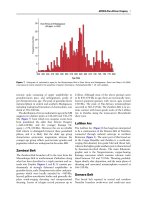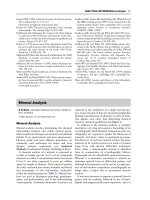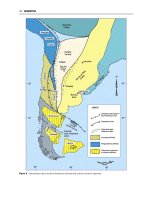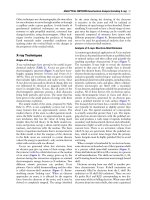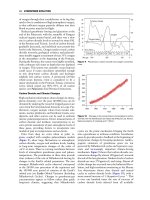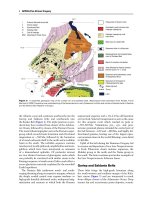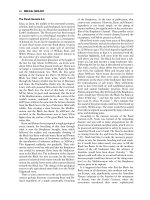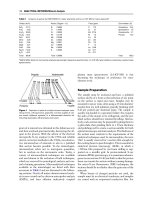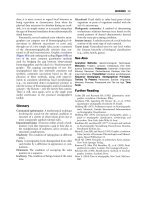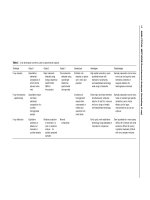Encyclopedia of geology, five volume set, volume 1 5 (encyclopedia of geology series) ( PDFDrive ) 2862
Bạn đang xem bản rút gọn của tài liệu. Xem và tải ngay bản đầy đủ của tài liệu tại đây (199.88 KB, 1 trang )
TECTONICS/Earthquakes 325
Figure 10 (A) Damage to a low rise poorly constructed stone building of the type affected by the Killari, India, 1991 earthquake
(photograph National Geophysical Data Center USA). (B) Improved training in building similar low rise buildings in the Yemen.
Reproduced from Degg MR (1995) Earthquakes, volcanoes and tsunamis: tectonic hazards in the built environment of southern
Europe. Built Environment 21: 94 113. Courtesy of the Geological Society, London.
Tsunami The so-called tidal wave generated by
earthquakes is probably the most lethal secondary
effect: during the twentieth century earthquakes in
Chile caused fatalities in Hawaii and Japan. The
effects of tsunamis may be felt thousands of kilometres from the earthquake epicentre, but can be
mitigated by systematic warning systems.
Fire Tokyo in 1923, San Francisco in 1906, and
Kobe in 1995 all suffered from the secondary effects
of fire. This was exacerbated by the fact that water
supplies were cut off. In Tokyo there was a firestorm.
In San Francisco, 70% of the damage was due to fire.
Liquefaction of sands, silts, and clays Another
important secondary effect is that thixotropic sands
and silts, which liquefy on shock, greatly increase the
damage: examples of this are the waterfront area in
the Messina earthquake, Sicily, of 1908, in which
98% of the houses were ruined and 160 000 died;
Mexico City in 1985, where the worst damage was
in building developments founded on old lake deposits (the wave amplitude was magnified 8–50
times here); and Anchorage, Alaska, where a magnitude 8.4 earthquake with an epicentre 130 km
away caused devastation in a housing development founded on the thixotropic Bootlegger Clay
